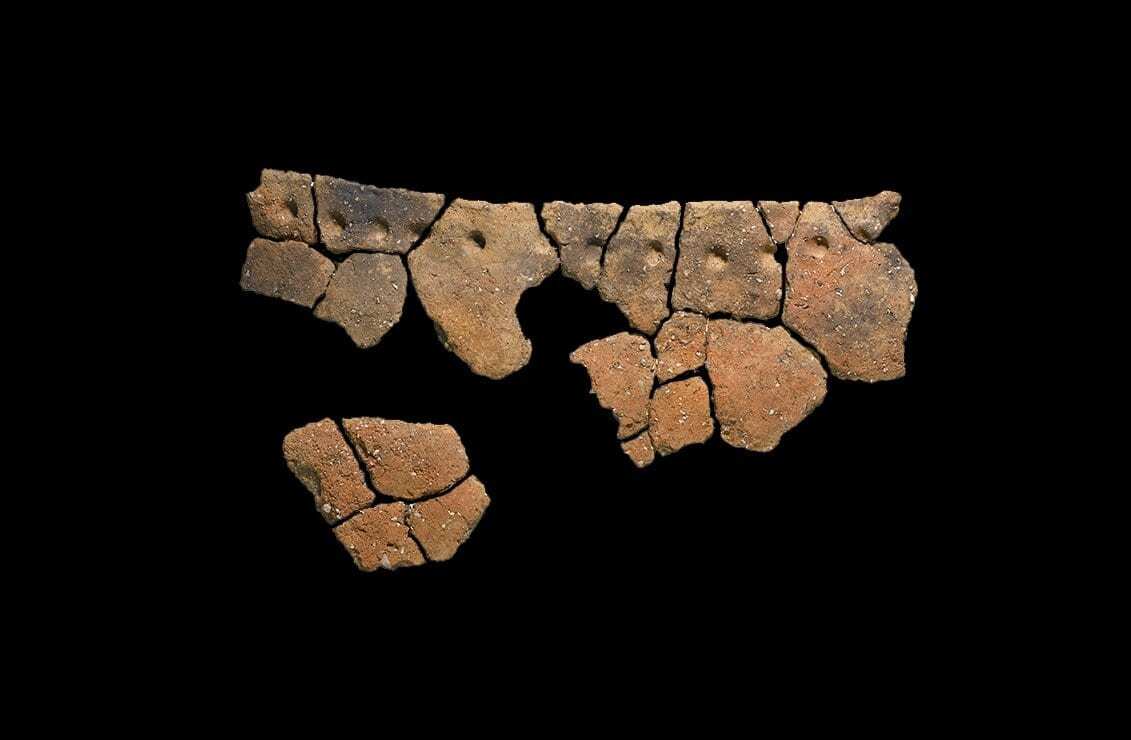A new radiocarbon dating technique, reported today in Nature, has been used to confirm the age of the most noteworthy group of Early Neolithic pottery ever found in London.
Our archaeologists found the extraordinary trove, comprising 436 fragments from at least 24 separate vessels and weighing nearly 6.5 kilos, while excavating at Principal Place in Shoreditch – the location of the new Amazon UK HQ – for Brookfield Properties.
It is extremely rare to find archaeology from this time in central London – let alone still in situ – and only a few individual fragments of pottery and stone axes have been uncovered to date, so the find fills a key gap in London’s prehistory.

Using their brand new radiocarbon dating technique on traces of milk fats extracted from within the fabric of the pottery fragments, researchers from the University of Bristol were able to narrow the timeframe for the pottery collection to a window of just 138 years, to around 3,600BC.
The results indicate that at this time, the area around what is now Shoreditch High Street was being used by established farmers who ate cow, sheep and goat dairy products as a central part of their diet. These people were likely to have been linked to the migrant groups who were the first to introduce farming to Britain from Continental Europe around 4,000 BC, only a few centuries earlier.
This is the strongest evidence yet that people in the area later occupied by the city and its immediate hinterland were living a less mobile, farming-based lifestyle during the Early Neolithic period. Early Neolithic houses, though very rare in southeast England, have been found at Horton in Berkshire, Cranford in Hounslow, and Gorhambury in the Colne Valley. The discovery of such a large group of pottery at Principal Place suggests that a similarly significant settlement may have existed nearby.
Eating habits of early London farmers
By using lipid analysis on Early Neolithic pottery from inner-city London for the first time, fascinating new details have been revealed about the food that people ate in what is now Shoreditch, and how they ate it, some 400 years or so after farming first arrived in Britain.
Results suggest that the pots had been used to process dairy products and to cook beef and mutton. There was very little in the way of pig products, which could suggest that pork was not stewed but cooked on a spit.
In addition to the scientific findings, the form of pots themselves proved interesting, with some having been decorated by pressing fingertips or roe deer hooves into the clay. This suggests that, even at this early date, people paid attention to the design as well as the function of tableware. It is fascinating to think that the fingerprints of their makers can still be made out 5,600 years later.
Pottery and the dating game
Pottery has been used to date archaeological sites for more than a century and, from the Roman period onwards, can offer quite precise dating. But further back in time, accurate dating becomes more difficult because the kinds of pottery from that time are often much less distinctive and there are no coins or historical records to give context. This is where radiocarbon dating, also known as 14C-dating, comes to the rescue.
Until now, we have had to radiocarbon date bones or other organic materials buried with pots to understand their age. But the best and most accurate way to date pots would be to do so directly; this is something which the team at University of Bristol is now able to achieve by dating the fatty acids left behind by food and this exciting new method is already being used to date pottery from a range of key sites up to 8,000 years old in Britain, Europe and Africa.
The Bristol team brought together the latest high-resolution nuclear magnetic resonance and mass spectrometry technologies to design a new way of isolating the fatty acids and checking they were pure enough for accurate dating. The trick to this involved isolating individual fat compounds from food residues, perhaps left by milk or cheese, which had been absorbed within the porous walls of prehistoric cooking pots.
The team then had to show that the new approach gave dates as accurate as those given by materials commonly dated in archaeology, such as bones, seeds and wood. To do this the team looked at fat extracts from ancient pottery at a range of key sites in Britain, Europe and Africa that already had been precisely dated and were up to 8,000 years old.
From the famous Sweet Track site in Somerset and several areas in the Alsace region of France, to the World Heritage site of Çatalhöyük in central Turkey and the ancient rock shelter site of Takakori in Saharan Africa, the new method was proven to date sites incredibly accurately, even to within a human life span.
Excavations at Principal Place were carried out for Brookfield Properties.
Header Image Credit : MOLA







